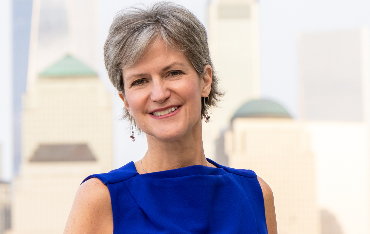
We Must Provide a Path to Success for New Yorkers Re-entering Society

Amidst a U.S. presidential transition and COVID-19 relief efforts, we should not overlook how recent legislation brought about a monumental, generation-defining shift to help prison inmates successfully re-enter society.
The federal stimulus package, signed into law in final days of 2020, eliminates barriers that had prevented incarcerated students from accessing financial support for higher education. The new law extends Pell grant eligibility and increases the number of students eligible for the maximum award. This landmark outcome amends decades-old legislation and opens up opportunity to those looking to rebuild their lives and contribute to our communities.
More than 25 years ago, amid bipartisan support, a controversial provision of the Violent Crime Control and Law Enforcement Act of 1994 overturned a section of the Higher Education Act of 1965 that had permitted incarcerated citizens to receive a Pell grant for higher education while they were serving a prison sentence.
In the aftermath of that legislation, prison college programs around the nation were disbanded, disproportionately impacting under-served populations desperately in need of access to higher education — including low-income households, people of color, women and thousands of incarcerated individuals preparing to emerge as contributing members of society.
Nationally, 68 percent of all men in prison do not have a high school diploma, compared to less than 11 percent of men nationally age 25 and older. For prospective students pursuing higher education to improve career opportunities, a lack of high school diploma looms as a significant barrier to economic prosperity and social mobility. So it makes sense that a 2018 study published by the Prison Policy Initiative (PPI) found that 27 percent of an estimated five million ex-offenders nationwide (1.35 million people) were unemployed at a time when overall national unemployment was about 4 percent. Renewing access to higher education for prison populations through strong GED programs and the most recent change in legislation will provide skill training that leads to employment for ex-offenders — especially male populations.
Higher education programs reduce incarceration rates and spending. Implementing these programs in prisons has been shown to reduce violence, increase compliance, and lower oversight expenditures — all of which reduce overall costs to taxpayers. Access to education will also improve the high rate of recidivism, which comes at a price, not just to individuals but to taxpayers, with the average annual cost to incarcerate one inmate in New York estimated to be more than $69,000. In New York City, that number is an astounding $337,524.
But the expansion of the Pell grant to prisoners is not enough. New York is one of 33 states with statutory bans on state grants-in-aid to students in prison or with past criminal convictions. Notably, New York prevents incarcerated people from receiving funds for higher education through its Tuition Assistance Program, the state’s companion to the Pell grant. New York has been denying TAP to prisoners since 1995, nearly as long as the now-defunct Pell ban.
The prior year, in 1994, 3,500 students in prison received assistance that was funded by less than 1% of New York’s TAP budget. Expanding TAP eligibility to incarcerated individuals today would cost about $15.2 million, or just 1.5% of the state’s TAP budget, according to advocacy group Turn on the TAP. It’s a worthwhile investment: every $1 million invested in correctional education prevents 600 crimes, according to the UCLA School of Public Policy and Social Research. That same money spent on incarceration prevents 350 crimes — almost half the impact.
Despite New York’s stance on TAP, 21 of 54 state prisons offer college programs through university partnerships and private foundation funding. But that funding is limited; state tuition assistance would boost these already established programs, allowing them to serve even more people. Because inmates in New York do not qualify for TAP, it is essential that we also look into other government grant opportunities.
Incarcerated education programs are also more successful when they are connected to state workforce needs. A study by the The Council of State Governments Justice Center found that workforce-relevant programs focused on hard skills (such as IT and business management) generated better employment outcomes than more ambiguous, general-education paths to employment. The same study also recommended tailoring curriculum and delivery models to optimize outcomes adult learners and those with learning disabilities.
Policymakers seeking to develop or implement education programs for incarcerated people should also consider the workforce skills most relevant to jobs in their communities and carefully prioritize programs that will provide healthy and stable work environments for individuals reentering society. Employer needs for relevant, in-demand skills are changing, so New York must develop affordable, accessible education pipelines that align with the state’s workforce needs.
Research shows that removing the federal ban on Pell grants for people in prison will increase employment rates an average of 10 percent among formerly incarcerated individuals. These benefits are exponential, as they help reduce poverty and disrupt intergenerational cycles of crime. Children of incarcerated students are themselves more likely to pursue their own post-secondary degree or certificate.
Now is the time to ensure all New Yorkers have access to the education and skills they need to move away from the past and build a successful future for themselves and their families, and to expand the state’s educated workforce — a critical element to building and sustaining a strong economy.
Rebecca L. Watts, Ph.D., serves as a regional vice president for Western Governors University (WGU), a nonprofit, accredited university delivering competency-based learning that serves more than 2,900 students in New York. She holds a doctorate in higher education leadership from Ohio University.
